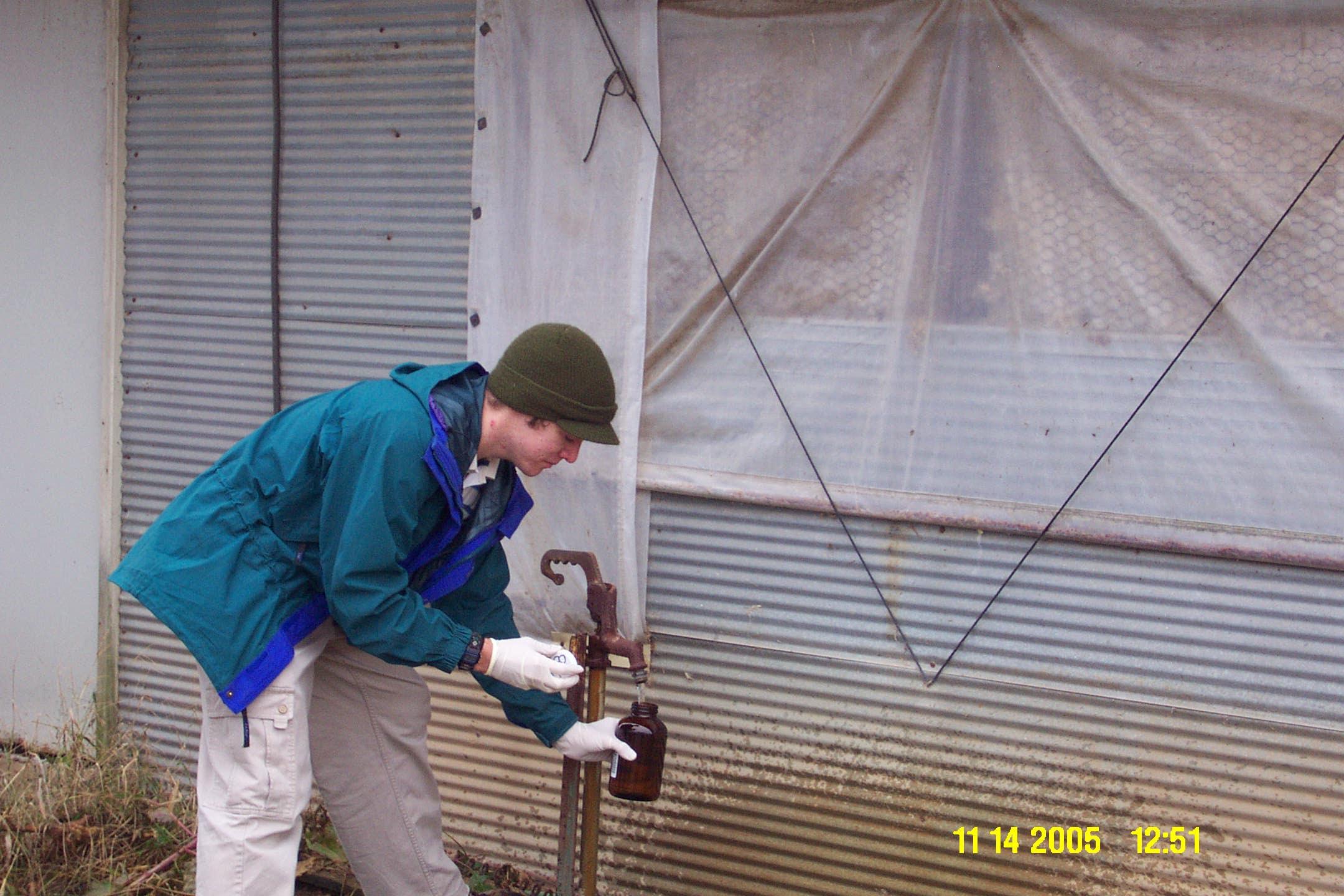Well Treatment
Maintaining and testing your well ensures that the water it is providing is safe and of a good quality. Maintenance involves protecting your well head by checking the well head for damage, and making sure that the ground surrounding the well head is sloping away from the well. Maintenance also involves treating your well and well water. The most common method of treatment is shock chlorination. Shock chlorination is the process used to disinfect private water wells with chlorine (bleach). Shock chlorination is the most widely recommended means of disinfecting the entire water distribution system (well, pump, waterlines, water heater, faucets, etc.) of bacteria. For more information on shock chlorination see ENRI-222: Disinfecting Your Well Water.
Testing your water system for bacteria and other contaminants should be conducted at least once every year, and anytime that you suspect an illness is being caused by your drinking water. Water testing helps you monitor water quality and identify possible risks to your family's health. Contaminants enter drinking water from a variety of sources, and many cannot be detected without a water test. Your water should be tested at least once a year for bacteria, nitrates, pH, and total dissolved solids. If pesticides are used on or near your property, you also may want to have a broad-spectrum test done to detect any pesticide residues. For more information on testing your home drinking water see ENRI-202: What You Need To Know About Testing Your Well Water.

You should only have your water tested in a state certified laboratory. The Kentucky Division of Water provides a list of approved laboratories here.
Record keeping is the final step in the maintaining your well. Hold on to information about your well's construction and keep detailed records of testing, inspections, and maintenance visits. Visually inspect your well often, and have it inspected by a qualified well driller or pump installer every 10 to 15 years. Regular well inspections can help you ensure that your water supply is safe.
